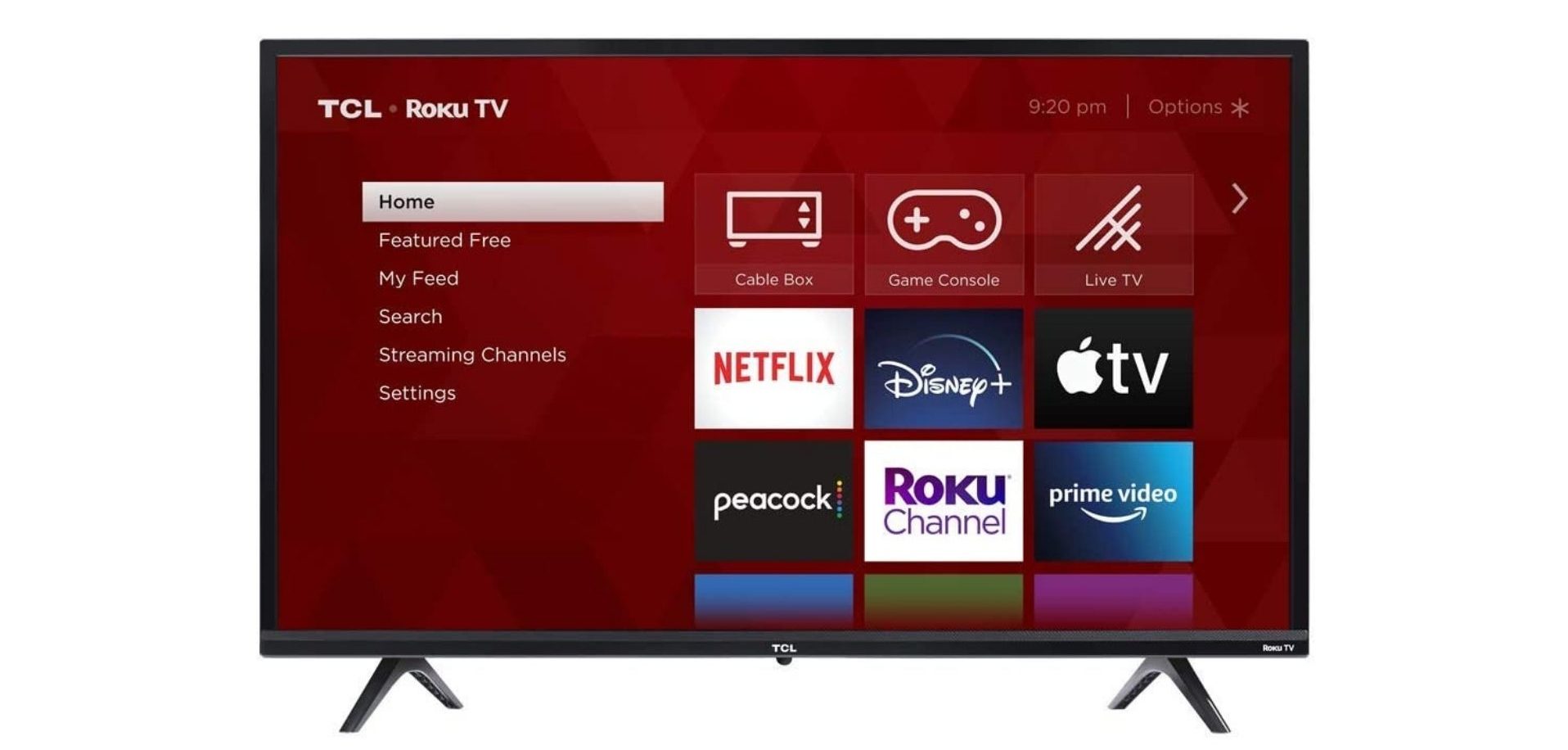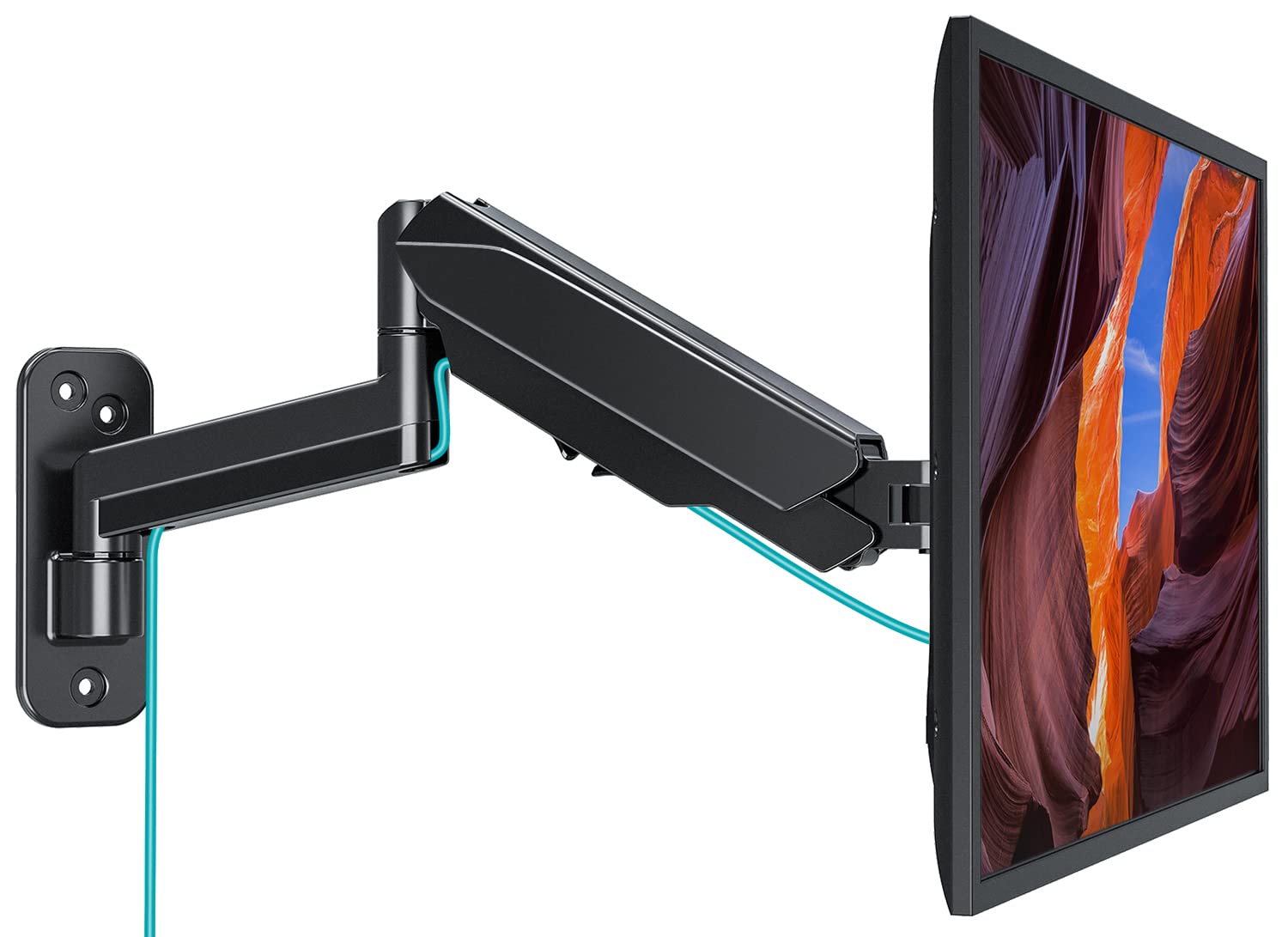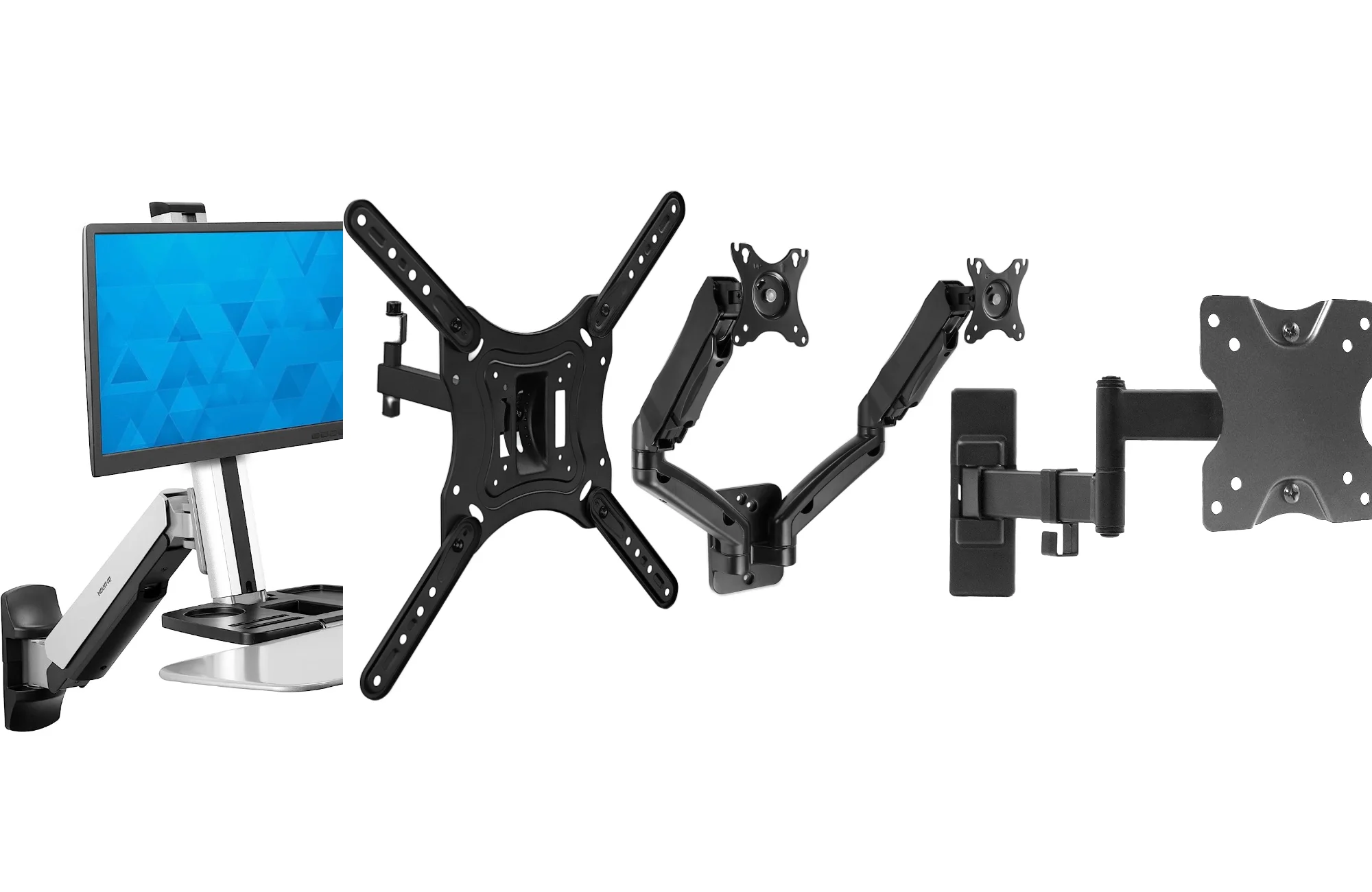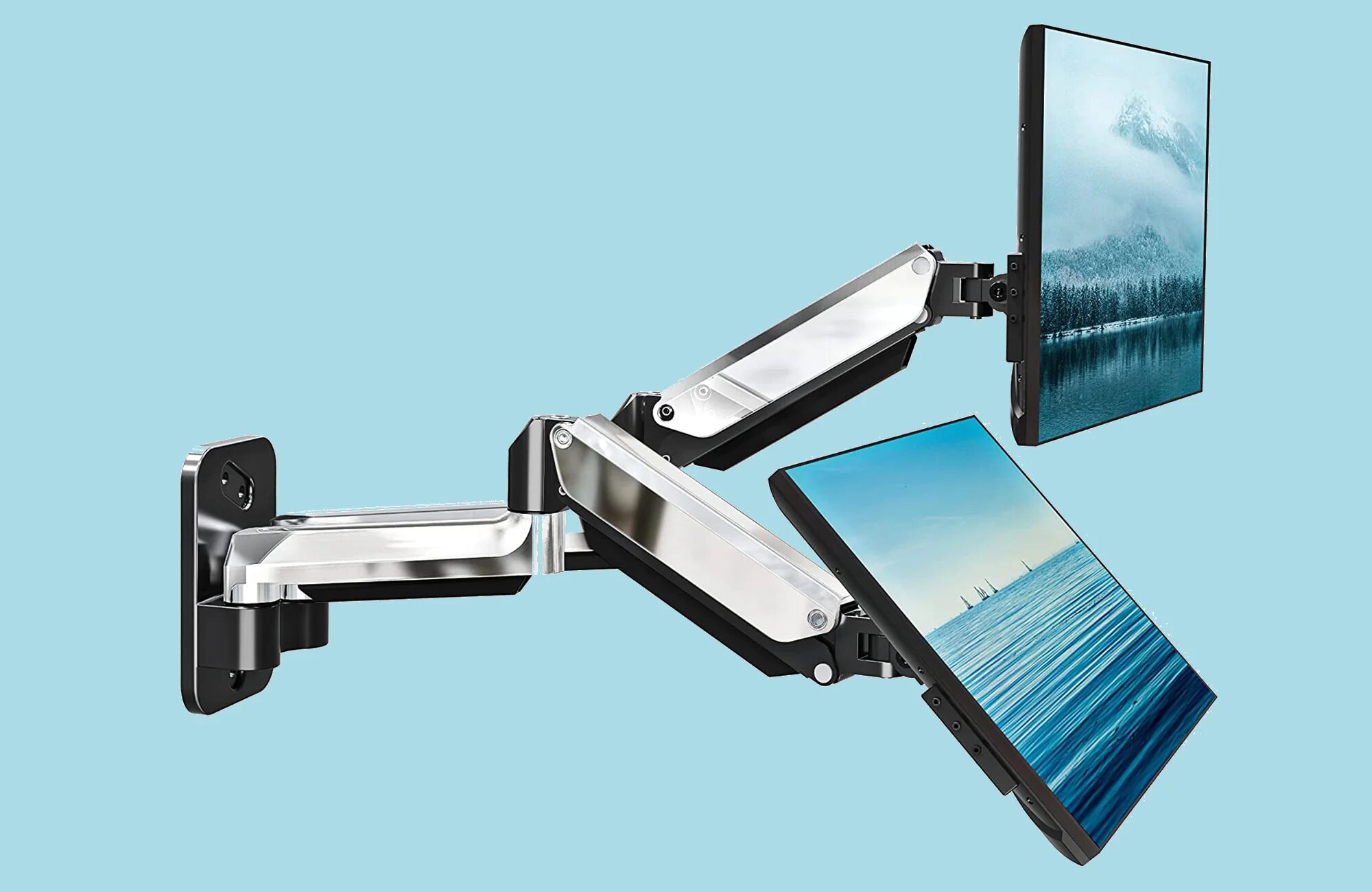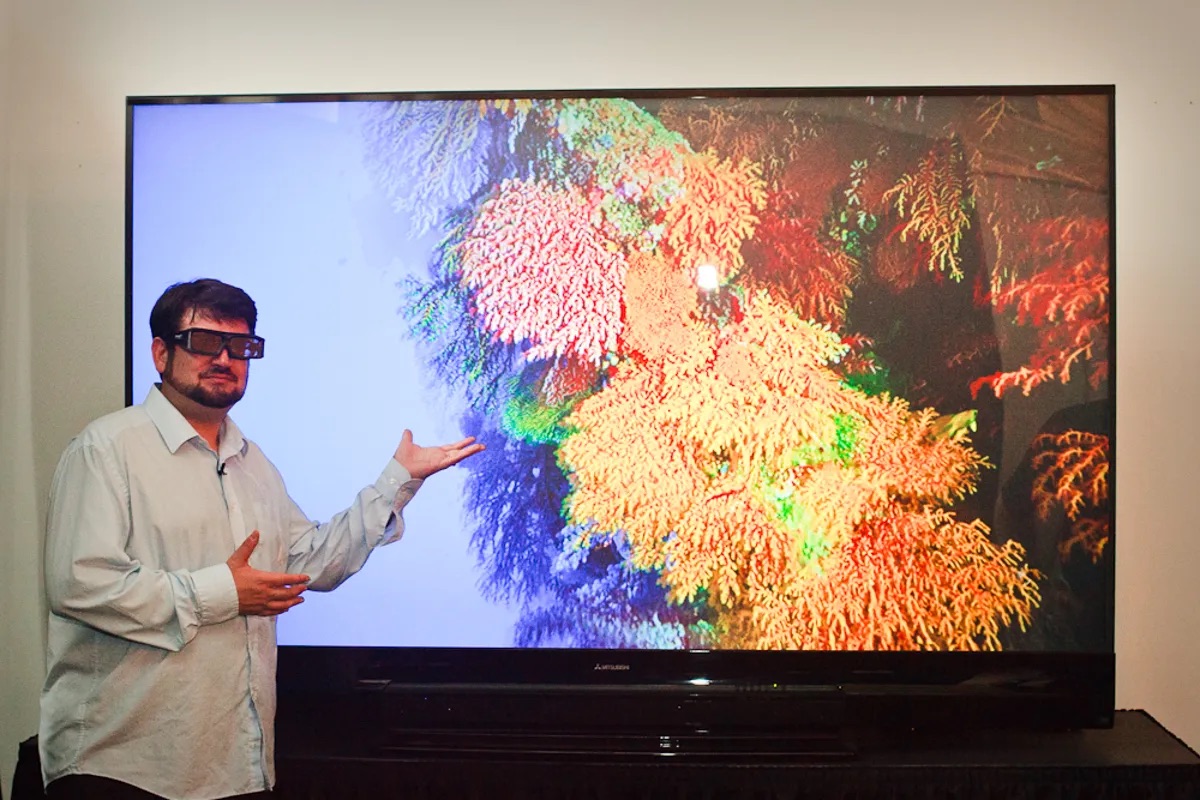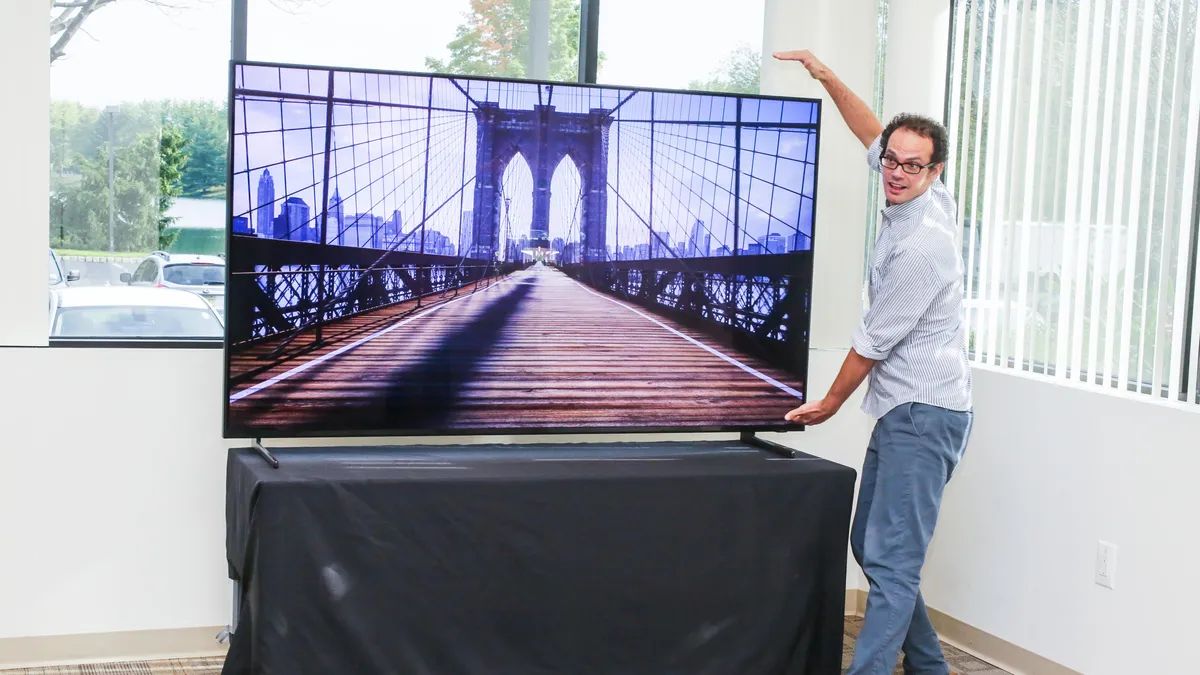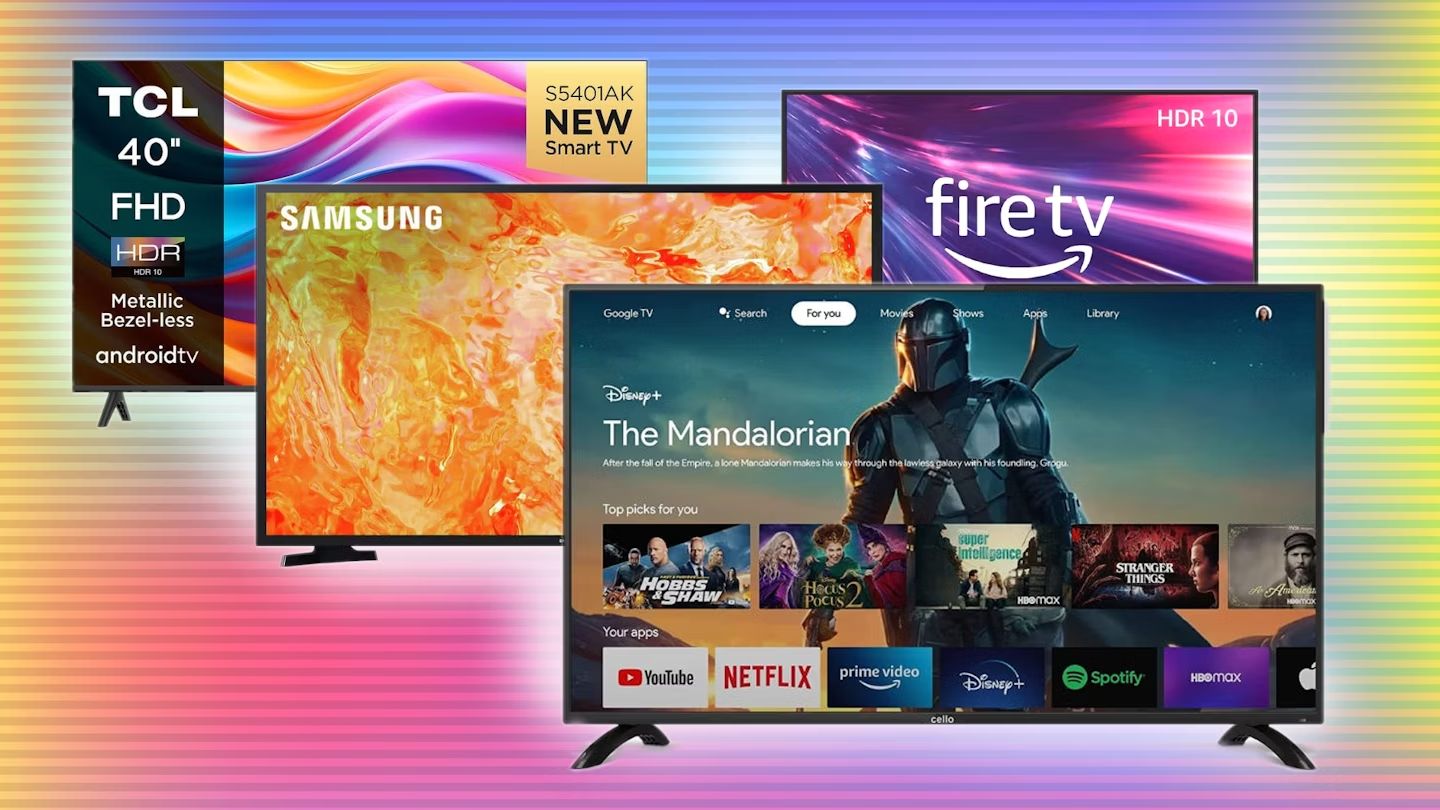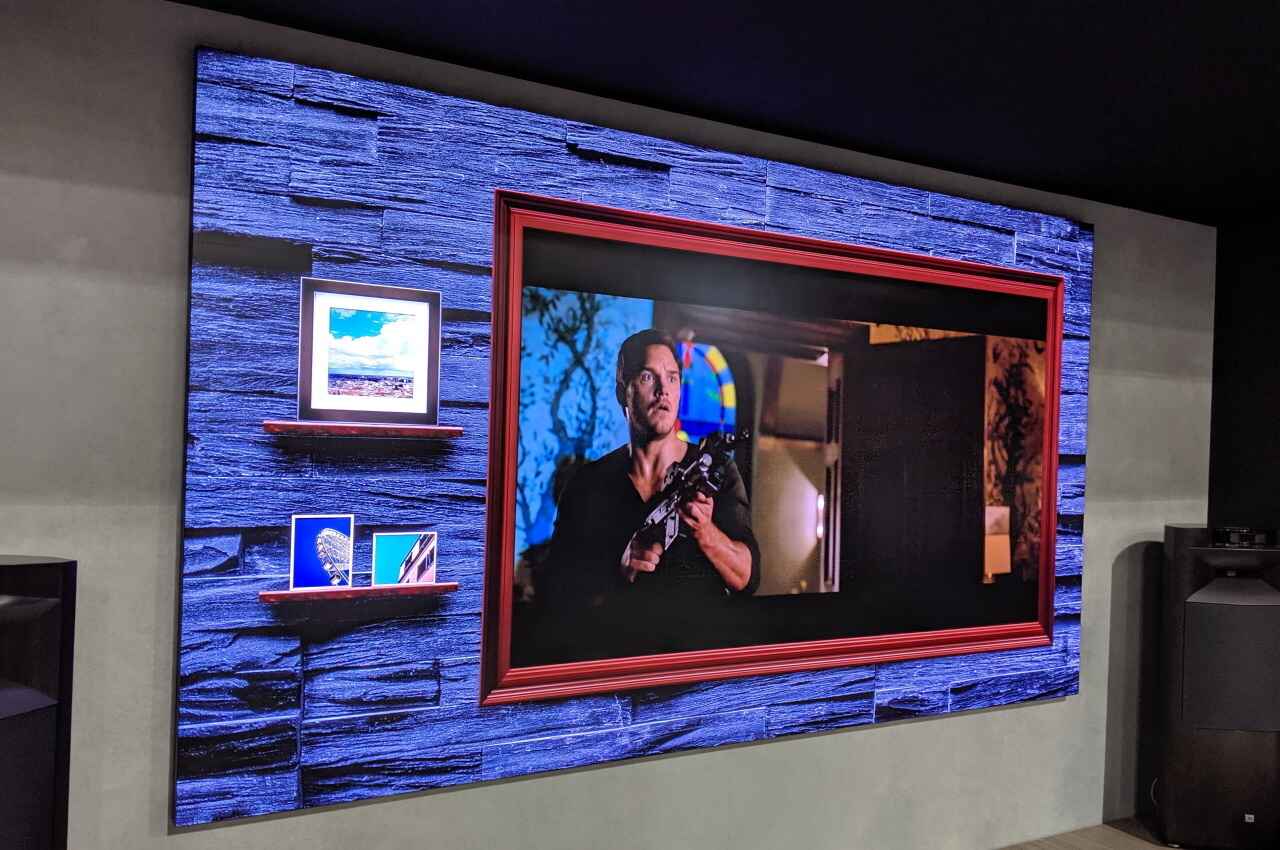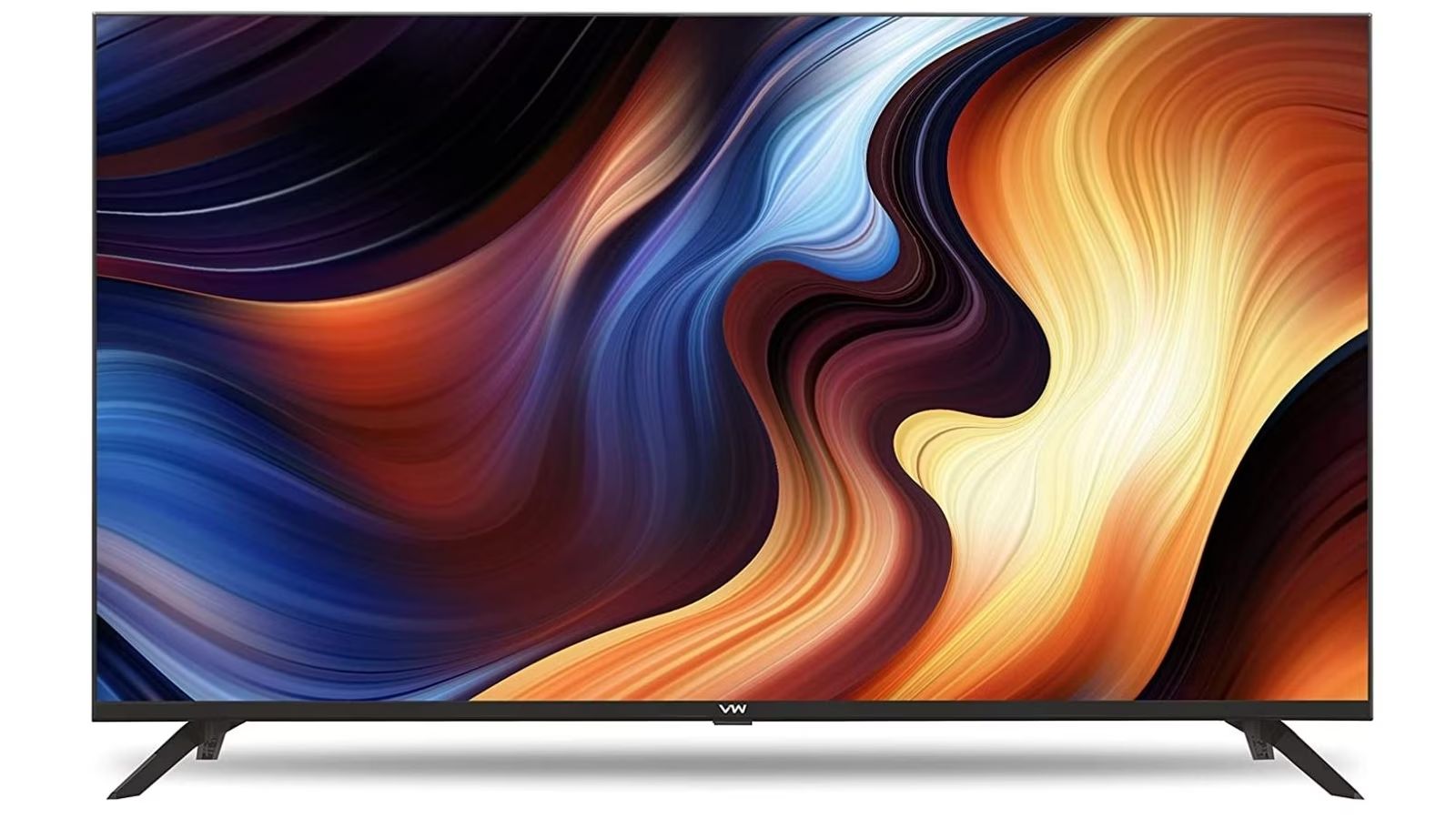Introduction
Are you thinking about purchasing a new 32-inch LED TV? One of the crucial factors to consider when making your choice is the weight of the TV. Understanding how much a 32-inch LED TV weighs can help you determine if it is suitable for your needs and if it can be easily installed in your desired location.
Weight is an essential consideration for several reasons. Firstly, it impacts the ease of transportation and installation. If the TV is too heavy, it may be challenging to move and place it where you want. Secondly, the weight can determine the type of wall mount or TV stand needed to support and display the TV properly. Additionally, knowing the weight can be helpful if you plan to mount the TV on a wall, as heavier TVs may require more robust mounting hardware.
There are various factors that can affect the weight of a 32-inch LED TV. Understanding these factors can provide insight into why different models may have varying weights. Additionally, knowing the anatomy of the TV, such as the type of display panel and the presence of additional features, can help you better understand how the weight is distributed and how it may impact the overall viewing experience.
This article will guide you through the various factors that can affect the weight of a 32-inch LED TV. We will explore the anatomy of a TV, including its display panel, bezel, stand, and internal components. By the end, you will have a better understanding of the average weight of a 32-inch LED TV and the benefits of opting for a lightweight option.
Why Weight Matters
When it comes to purchasing a 32-inch LED TV, you might be wondering why the weight of the TV is important. Well, the weight of the TV plays a significant role in several aspects, and understanding its implications can help you make an informed decision.
Firstly, weight affects the ease of transportation and installation. A lighter TV is much easier to handle and move around. This is especially important if you plan on frequently repositioning your TV or if you need to move it from one room to another. On the other hand, a heavier TV can be more cumbersome to lift and may require multiple people to safely transport it. So, considering the weight is crucial if you value flexibility and mobility.
Secondly, the weight of the TV impacts the type of wall mount or TV stand you need. These accessories are designed to support specific weight limits, ensuring the safety and stability of your TV. If your TV exceeds the weight capacity of the wall mount or stand you have, it can pose a significant risk of falling and causing damage to both the TV and your surroundings. So, knowing the weight of the TV is essential to choose the appropriate mounting or stand option.
Furthermore, weight can also impact the overall visual aesthetics of your viewing area. A lightweight TV can be mounted on a slim and minimalistic wall mount, giving your space a sleek and stylish appearance. On the other hand, a heavier TV might require a bulkier or more robust mounting solution, which can take away from the clean and modern look you desire. So, considering the weight of the TV is vital if you have specific design preferences for your entertainment area.
Lastly, weight also affects the energy efficiency of the TV. In general, lighter TVs tend to consume less energy compared to heavier ones. This can result in lower electricity bills over time, as well as a reduced environmental impact. So, if you are conscious about energy consumption and sustainability, opting for a lighter TV can be a wise choice.
Considering all these factors, it becomes evident that the weight of a 32-inch LED TV is not something to overlook. By taking into account the weight, you can ensure easy installation, choose the appropriate mounting or stand option, achieve the desired visual aesthetics, and promote energy efficiency. Now, let’s explore the various factors that can influence the weight of a 32-inch LED TV.
Factors Affecting the Weight of a 32-Inch LED TV
The weight of a 32-inch LED TV can vary depending on several factors. Understanding these factors can help you better understand why different models may have varying weights. Let’s take a closer look at the key factors that can affect the weight of a 32-inch LED TV.
1. Screen Technology: The type of screen technology used in the TV can significantly impact its weight. LED TVs generally weigh less compared to older technologies like LCD or plasma, as LED panels are thinner and lighter. Additionally, within LED TVs, there are variations in the type of LED backlighting used, such as edge-lit or direct-lit, which can also influence the weight.
2. Display Panel Size: The size of the display panel, in this case, 32 inches, can also affect the overall weight. The larger the panel size, the more materials are needed to construct it, resulting in increased weight. However, compared to larger TVs, 32-inch TVs are generally lighter due to their smaller size.
3. Bezel Design: The bezel, the frame surrounding the display, can vary in design and material. Bezel-less or slim bezel designs tend to be lighter compared to TVs with thicker bezels. Additionally, the materials used, such as plastic or metal, can also impact the weight.
4. Stand Type: The type of stand used with the TV can contribute to its weight. Some TVs come with a standard table-top stand, while others have a more elaborate and sturdy stand. TVs that are designed for wall mounting may not even come with a stand, further reducing the overall weight.
5. Additional Features: The inclusion of additional features and functionalities can add to the weight of the TV. For example, built-in speakers, smart TV capabilities, extra ports, and advanced image processing technologies can all contribute to a slightly heavier TV.
While these factors can influence the weight of a 32-inch LED TV, it’s worth noting that the differences in weight are generally minimal. Most 32-inch LED TVs weigh between 10 to 15 pounds (4.5 to 6.8 kilograms), making them relatively lightweight and easy to handle.
Having understood the factors that affect the weight of a 32-inch LED TV, let’s now delve deeper into the anatomy of a TV to gain more insights into its weight distribution and components.
Understanding the Anatomy of a 32-Inch LED TV
To comprehend the weight distribution and components that contribute to the overall weight of a 32-inch LED TV, it is essential to understand its anatomy. Let’s break down the different elements of a TV and how they can impact the weight.
1. Display Panel: The display panel is the primary component of the TV, responsible for producing the images you see. In a 32-inch LED TV, the display panel consists of an array of LEDs (light-emitting diodes) that emit light through a liquid crystal layer to create the visuals. LED panels are generally thinner and lighter compared to older LCD or plasma technologies, contributing to the overall reduced weight of the TV.
2. Bezel: The bezel refers to the frame surrounding the display panel. It can be made of different materials such as plastic or metal. The thickness and design of the bezel vary across different models and brands. Slim bezel designs or bezel-less TVs tend to be lighter since they use less material.
3. Stand: The TV stand provides stability and support for the TV when placed on a tabletop or other surfaces. The stand can be made of plastic, metal, or a combination of both. Depending on the design and materials used, the weight of the stand can vary. Additionally, some 32-inch LED TVs may come with detachable or optional stands, which can further reduce the weight.
4. Internal Components: Inside the TV, there are various internal components that contribute to its functionality. These include the power supply, circuit boards, processors, and audio components. While these components do add some weight to the TV, their overall impact on the total weight is relatively minimal.
5. Additional Features: Modern 32-inch LED TVs often come with additional features and functionalities. These can include built-in speakers, smart TV capabilities, internet connectivity, and various input/output ports. The incorporation of these additional features can slightly increase the weight of the TV, but the difference is usually negligible.
It’s important to note that while the components mentioned above can affect the weight, manufacturers strive to keep 32-inch LED TVs lightweight for ease of handling and installation. The average weight of a 32-inch LED TV typically falls within the range of 10 to 15 pounds (4.5 to 6.8 kilograms).
By understanding the anatomy of a 32-inch LED TV, you can have a clearer picture of how weight is distributed and how different components contribute to the overall weight. Now, let’s explore the average weight you can expect from a 32-inch LED TV and some lightweight options available in the market.
Average Weight of a 32-Inch LED TV
When it comes to the weight of a 32-inch LED TV, it is helpful to have an understanding of the average weight range for this particular size. While the weight can vary slightly depending on the model and brand, there is a general range that you can expect.
On average, a 32-inch LED TV weighs between 10 to 15 pounds (4.5 to 6.8 kilograms). This weight range applies to most 32-inch LED TVs available in the market. Manufacturers strive to keep these TVs lightweight for enhanced portability, ease of installation, and to accommodate various mounting options.
It’s important to note that the weight mentioned above refers to the TV itself and does not include any additional accessories, such as the stand or the wall mount. The weight of the stand can vary depending on the design and materials used, but it generally adds a few pounds to the overall weight of the TV.
It’s worth mentioning that advancements in technology and materials have allowed manufacturers to create even lighter and slimmer 32-inch LED TVs. Some models in the market weigh as little as 7 to 8 pounds (3.2 to 3.6 kilograms), making them exceptionally lightweight and easy to handle.
When considering the weight of a 32-inch LED TV, it is also crucial to consider the weight capacity of the mounting solution or TV stand you plan to use. Choose a mounting option that can safely support the weight of the TV, ensuring stability and maintaining the security of your investment.
Now that you have an idea of the average weight range for a 32-inch LED TV, let’s explore some lightweight options available in the market that provide additional benefits.
Lightweight Options for 32-Inch LED TVs
If you prioritize portability and ease of installation, there are several lightweight options available for 32-inch LED TVs. These options not only contribute to a hassle-free experience but also offer additional benefits. Let’s explore some of these lightweight options:
1. Slim Design: Many manufacturers have embraced slim designs for their 32-inch LED TVs, making them lighter and more visually appealing. These slim TVs are often thinner and sleeker, making them easier to handle and mount on a wall or a stand.
2. Compact Wall Mounts: Investing in a lightweight and compact wall mount can provide stability and security for your TV while reducing the weight burden. Look for wall mounts specifically designed for lightweight TVs and ensure that they can support the weight of your 32-inch LED TV.
3. Detachable Stands: Some 32-inch LED TVs come with stands that can be easily detached. These stands are typically lightweight and can be removed if you prefer to mount your TV on a wall or use a different stand. Detachable stands offer flexibility and reduce the overall weight of the TV.
4. Portable TV Stands: If you prefer to have your TV freestanding, a portable TV stand can be a great option. Lightweight and foldable stands are available, allowing for easy transportation and installation. These stands provide stability while keeping the weight of the TV manageable.
5. Wireless Connectivity: Some 32-inch LED TVs come equipped with wireless connectivity options, allowing you to eliminate the need for additional cables and accessories. This not only reduces clutter but also contributes to a lightweight setup.
Opting for lightweight options for your 32-inch LED TV provides convenience and ensures that the TV can be easily moved or installed in various locations. However, it is still essential to consider the weight capacity and compatibility of any accessories you choose, such as wall mounts or portable stands.
By selecting lightweight options for your 32-inch LED TV, you can enjoy enhanced portability, easy installation, and flexibility in choosing your preferred setup. Now, let’s summarize the benefits of choosing a lightweight TV.
Benefits of a Lightweight TV
Choosing a lightweight TV, such as a 32-inch LED TV, offers several advantages and benefits. Let’s explore some of the key benefits of opting for a lightweight TV:
1. Easy Portability: A lightweight TV is much easier to transport and move around. Whether you need to rearrange your living space or relocate the TV to another room, a lighter weight makes the task significantly more manageable. You can carry it without straining yourself or require help from others.
2. Hassle-Free Installation: Installing a lightweight TV is a breeze. Mounting it on a wall or setting it up on a stand becomes a straightforward task that you can handle on your own. There is no need to worry about heavy lifting or complicated installation processes.
3. Flexible Placement Options: With a lightweight TV, you have more flexibility in choosing the ideal location for your viewing pleasure. You can easily mount it on a wall or place it on a variety of stands without being limited by weight restrictions. This allows you to create a customized setup that suits your preferences and space.
4. Enhanced Visual Aesthetics: A lightweight TV often comes with a sleek and slim design. The thin profile adds a modern and stylish touch to your viewing area, creating a visually appealing setup. You can achieve a minimalist look without the bulkiness that comes with heavier TVs.
5. Improved Energy Efficiency: Lighter TVs generally consume less electricity compared to heavier models. This translates to lower energy consumption and potentially reduced electricity bills. Opting for a lightweight TV can support your efforts to be more environmentally friendly and energy-conscious.
6. Easier Cable Management: Dealing with cables and wires becomes more convenient with a lightweight TV. The reduced weight makes it easier to manage and hide cables behind the TV or route them neatly along stands or walls. This leads to a cleaner and tidier setup with less hassle.
Overall, a lightweight TV offers convenience, flexibility, and aesthetic advantages. It ensures that you can easily transport and install the TV without any complications. Whether you prefer wall-mounted or freestanding configurations, a lightweight TV enables you to create your desired entertainment setup effortlessly.
Now that we have explored the benefits of a lightweight TV, let’s summarize the key points discussed throughout this article.
Conclusion
When considering a 32-inch LED TV, understanding the weight and its implications is crucial for making an informed decision. The weight of the TV impacts transportation, installation, and the overall viewing experience. Factors such as screen technology, display panel size, bezel design, stand type, and additional features can all affect the weight of the TV.
On average, a 32-inch LED TV weighs between 10 to 15 pounds (4.5 to 6.8 kilograms), with some newer models even lighter. Manufacturers strive to keep these TVs lightweight for ease of handling, flexibility in setup, and compatibility with various mounting options.
Opting for lightweight options, such as slim designs, portable stands, compact wall mounts, and wireless connectivity, offers additional benefits. These include easy portability, hassle-free installation, flexible placement options, enhanced visual aesthetics, improved energy efficiency, and easier cable management.
By considering the weight and exploring lightweight options, you can create a convenient and customized viewing experience that suits your needs and preferences. Whether you need to transport the TV frequently, mount it on a wall, or simply prefer a sleek and stylish setup, a lightweight TV can provide the versatility and ease you desire.
Now, armed with knowledge about the weight and its impact on your TV choice, you can confidently select the perfect 32-inch LED TV that meets your requirements, fits within your space, and enhances your entertainment experience.







